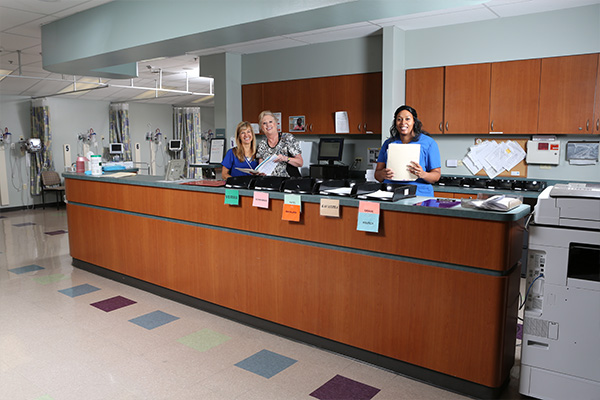Small Bowel Enteroscopy

A small bowel enteroscopy is a test performed to evaluate gastrointestinal bleeding, small bowel tumors, polyps, or other small bowel diseases. During the procedure, the physician uses a thin, flexible tube called an endoscope to examine the lining of your esophagus, stomach, duodenum (first portion of the small bowel) and jejunum (the middle portion of the small bowel). A small bowel enteroscopy may also be used to treat various conditions of the upper gastrointestinal (GI) tract, such as abnormal growths or bleeding.
Preparation for the Exam
The preparation for this exam is relatively simple. Your physician will provide you with special instructions for this exam.
A companion must accompany you to the examination. You will be given medications to sedate you during the procedure and you will need someone to take you home. Driving an automobile is not allowed after the procedure. Even though you may not feel tired, your judgment and reflexes may not be normal.
What to Expect During the Exam
A small catheter for intravenous (IV) medicines will deliver sedating medicine that will make you relaxed and sleepy. For some patients, deep sedation, where the patient is completely asleep, is utilized. Your physician will insert a flexible tube, called an endoscope, into your mouth and will advance it slowly through the esophagus, stomach, duodenum and jejunum. You may have a feeling of pressure or fullness. If growths or other abnormalities are found during the procedure, your physician may remove, or biopsy, the abnormal tissue for further examination. Removal of this tissue is painless.
Risks of Small Bowel Enteroscopy
Small bowel enteroscopy is safe and associated with very low risk. One possible complication is perforation, or tear through the wall of the bowel that may allow leakage of intestinal fluids. This complication usually requires surgery for treatment. Bleeding may occur from the site of biopsy or polyp removal. It is usually minor and stops on its own or can be controlled by cauterization (application of an electrical current) through the endoscope. Rarely transfusions or surgery are required. Irritation of a vein at the site where medications were administered may also occur. Drug reactions may also occur despite careful review of an individual’s medical history. Finally, like any test, pathology may be missed in a small number of cases leading to an error in diagnosis.
